| Fawaran - Effervescence (Unrest) - Housing, Language, History - A New Generation in Jewish-Arab Cities, Nachum Gutman Museum of Art, 11.4.2013-24.8.2013 (curator, book in Hebrew and Arabic) | | | | exhibition view | | | The exhibition, book and accompanying events Fawarab - Effervescence (Unrest) - Housing, Language, History - A New Generation in Jewish-Arab Cities - focus on the Palestinian voice of Israel's bi-national cities and their inhabitants, citizens of the State of Israel.* The project gives expression, for the first time, to the significant and dynamic activity in the cities since the uprising of 2000, of committed artists, filmmakers and musicians; civil society organizations - associations, movements, groups, and activists; and to formal or radical organizing. The developing civil society, vibrant and teeming with new cultural initiatives, is striving to replace the old guard, to challenge the present and to influence the future. As Israeli institutional exclusion, segregation and erasure from public space intensifies, so too does the struggle for change. Artists and activists are fighting to reduce the disparity; are struggling over housing, planning, education, budgets, the "right to the city," and to apply democracy to all residents of the state; and are exposing the Palestinian history of the cities' inhabitants and the Arabic language. These significant actions and increasing activism take place in parallel with the work of Israeli (Jews) and Palestinian citizens of Israel - activists, artists and groups from Israel working in collaboration, or occasionally only Israelis wishing to present the Palestinian voice and working to establish an egalitarian and democratic society.
The unrest of the Palestinian citizens of the State of Israel was already present in the region before the Arab Spring, and naturally connected with its thunderous protests. This happened in parallel with the activism for change, that spread through dictatorial regimes prior the Arabic spring and which ripened into a resounding defiance.
Several aspects characterize activism and the artistic work associated with it. The first is the significant role of Palestinian and Israeli women artists and activists. Second is the intense activity in the digital sphere (a significant element of activism) and in film and video - the moving image (the visual arts). Third is the attempt to present Arab history and language. For example the "phenomenon" of tours conducted in Palestinian cities that tell the Palestinian story, naming of streets in Arabic, or the increase in the visual arts that address the destruction of the Palestinian community and its culture and the loss of the modern urban Palestinian city in the wake of the Nakba. Fourth are the different modes of using archival material by artists who sometimes "cleanse" them of the archive's original aim. The fifth is exiting gallery space in exchange for action in the public sphere.
Another focus of the exhibition is truth and falsehood, and their role in entrenching narratives and memories. A number of artists cast a sober, critical and sometimes cynical eye at the way official history is recorded, and intentionally create a conscious or historical disruption. The manner in which awareness and the geographical and urban spaces in the cities are changing, together with the important role of artistic and cultural activism in matters of housing and urban planning, and the significant battle for housing and identity reflected in the music, are also present in the exhibition.
Manshiyah and Jaffa are highlighted in the exhibition due to their proximity to the Nachum Gutman Museum. The sea also plays a significant role - as a symbol of migration, expulsion, and the catastrophe that took place, but also as a shared space of encounter. Historical records - documents, photographs, and video - serve as a reference that gives the historical context, bringing into sharper focus the issues addressed by the exhibition.
* Arab citizens of Israel, including the artists and activists in the exhibition, define themselves as Palestinians as part of their struggle for identity.
| | | Raafat Hattab, Women of the Night on the Balcony, performance after Nachum Gutmans drawing Brothel in Jaffa from the 1920s
The performance took place at the opening of the exhibition, 11.4.2013
Participating artists and associations at the Exhibition: Alakqiyah Group, Raida Adon, Anisa Ashkar, Raafat Hattab, Meir Gal, Fahed Halabi, Dor Guez, Anat Even, Jumana Manna, Kamal Aljafari, Scandar Copti and Rabih Bukhary, Nissreen Najjar, Durar Bacri, Michael Halak, The Activestills collective (Yotam Ronen, Oren Ziv, Keren Manor), Yehudit Ilany, Esti Tsal, Ronen Eidelman, The Path of Language, The Parhesia Group, in Collaboration with Sadaka- Reut and Ido Bahat.
Participating Bands and Singers:
DAM, Amal Markus, Ministry of Dubkey, Bruno Cruz, Mahmood Jrere, Walaa Sbeit, Maysaa Daw, Mahmood Shalabi, Adi Krayem, Safaa Arpiyat, System Ali, Walaat, Hasan Nakhleh, Rami Nakhhleh, Maysa Sbeit, Terez Sliman, Samy Matar, Shadi Awidat, Ayed Fadel
Historical Documentation: Yoel Zilberg, Unknown Photographers (IDFA), Rachman, Nathan Axelrod, Hans Chaim Pinn, David Alden (Government Press Office), Fred Tzisnik (Jewish National Fund) and various Unknown photographers
| | | | Events accompanied the exhibition | | | The book Fawaran - Effervescence accompanying the exhibition will be launched at a conference that takes place at the Nachum Gutman Museum on 9.5.2013.
A Palestinian Film Festival ,initiated by Rona Sela and curated by film director Scandor Copti, will take place at the Tel Aviv Museum of Art on 23.5.2013-24.5.2013.
Brit Shalom 2012 meetings will take place at the exhibition on 5.5. 2013, and 16.6.2013.
Research and publication of the book were supported by Israel Lottery Council for Culture and Arts.
The exhibition was made possible through the generous support of Tel Aviv - Jaffa Municipality Culture and Arts Division. | | |
| | | | Palestinian Film Festival, Tel Aviv Museum of Art, May 23-24,2013, Curator Scandar Copti | | | 1. A Sketch of Manners, Alfred Roch’s Last Masquerade, 2012, 12 minutes, Director: Jumana Manna
2. Oranges, 2009, 7 minutes, Director: Maha Haj Asal
3. The Sons of Eilaboun, 2007, 24 minutes, Director: Hisham Zreiq
4. Be Quiet, 2005, 21 minutes, Director: Sameh Zoabi
5. No News, 2011, 7 minutes, Director: Eyas Salman
6. Turmus, 2012, 14 minutes, Director: Sari Bsharat
7. Sense of Morning, 2010, 8 minutes, Director: Maysaloun Hamoud
8. Man without a Cell Phone, 2010, 87 minutes, Director: Sameh Zoabi
| | | | Press (English) | | | | Barry Davis, "Bubbling over with optimism",Jerusalem Post, 7.6.2013 | | | | Galia Yahav,"An intifada substitute in the heart of Tel Aviv", Haaretz, 1.7.2013 | | | | Marko, Martin, Die Welt, 6.8.2013 | | |
| | | | 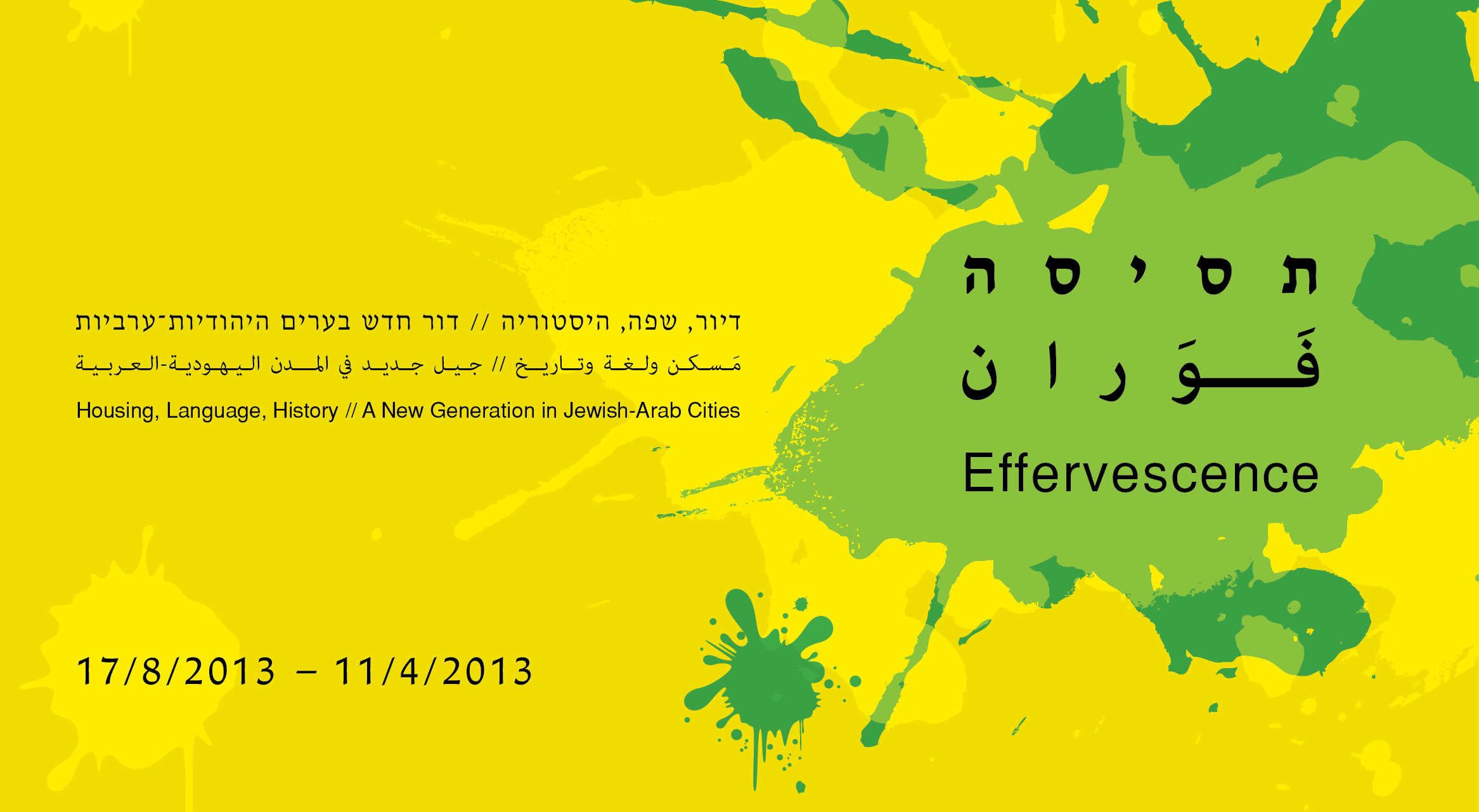 | | | | | 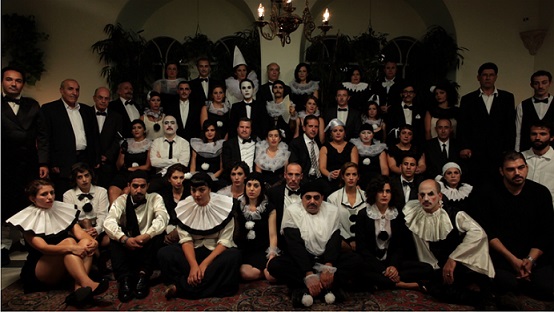 | | Jumana Manna, Sketch of Manners (Alfred Roch’s Last Masquerade), 2012
Film, 7:31 minutes, Courtesy of the artist
| | | 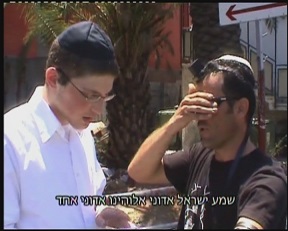 | | Fahed Halabi, Tefilin, 2007
| | | 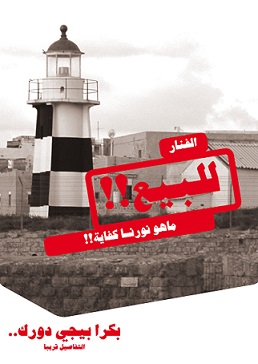 | | Alakqiyah Group, Akka is Not For Sale, 2008
Posters | | | 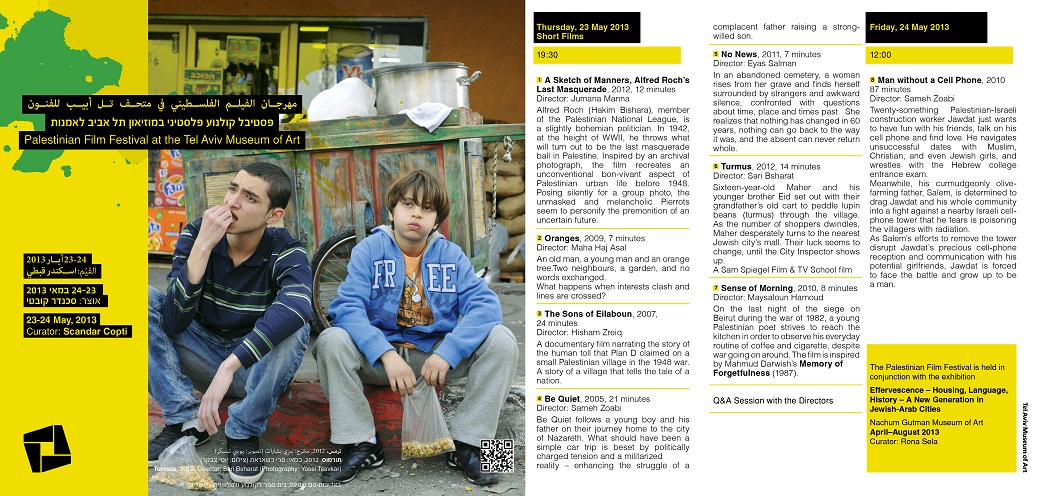 | | Film Festival Program, Tel Aviv Museum of Art | | | 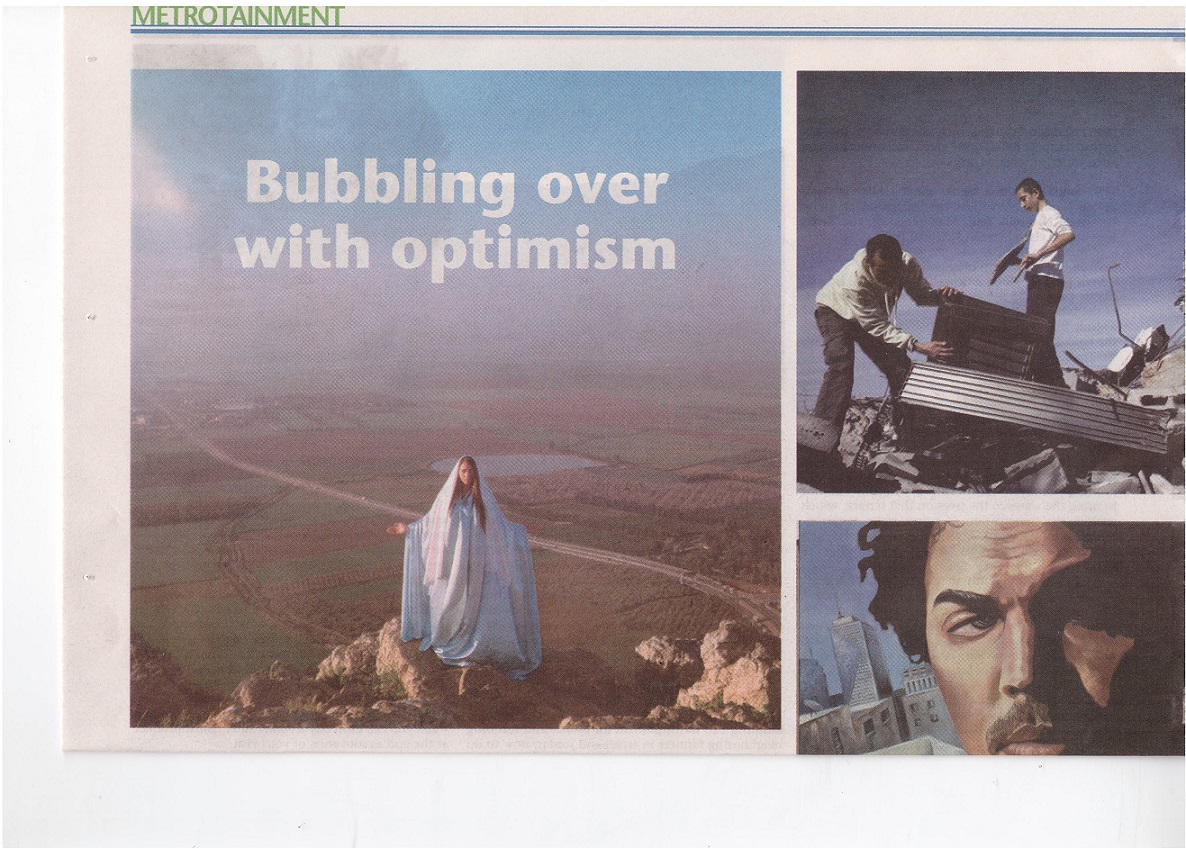 | | Jerusalem Post (1) | | | 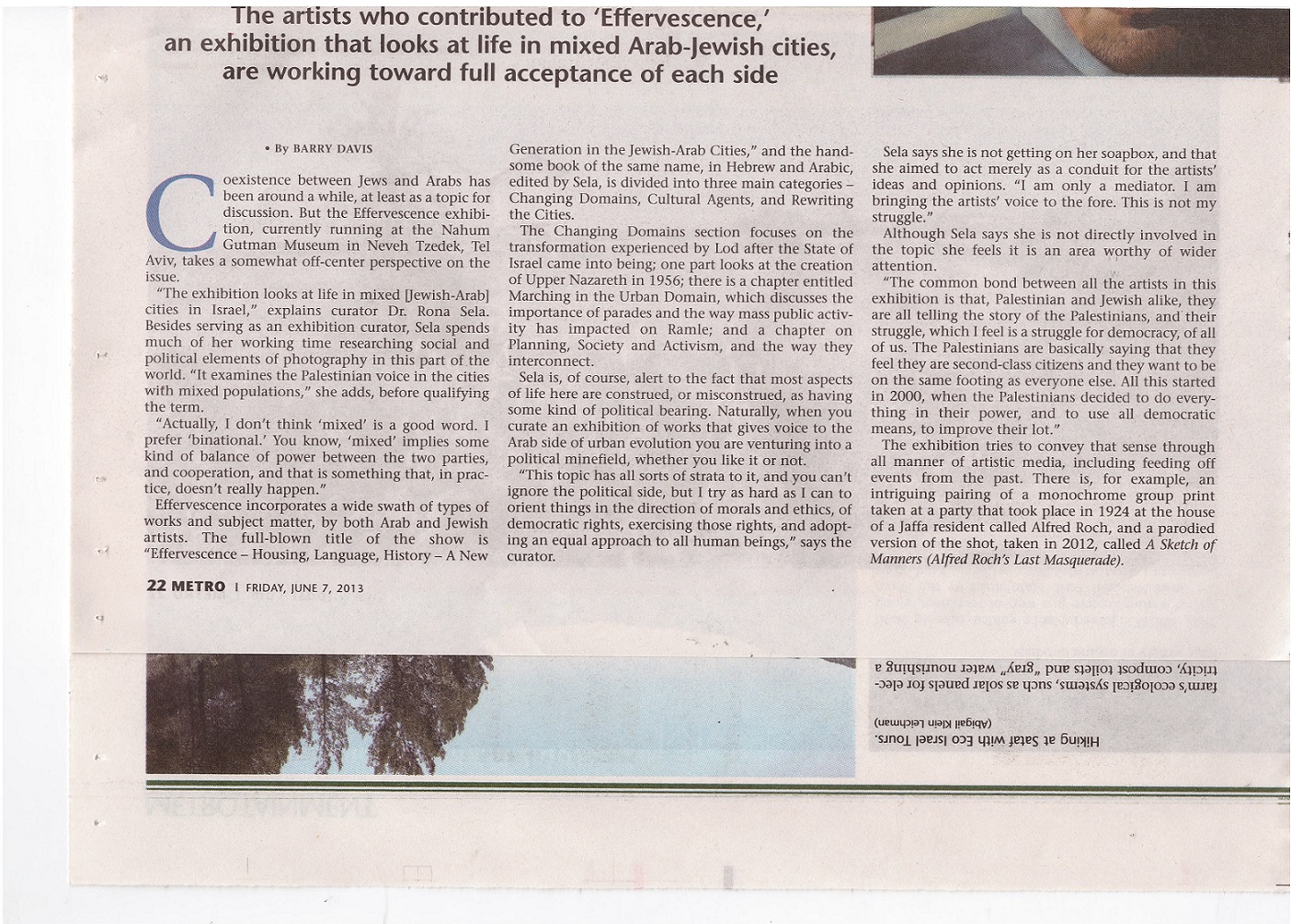 | | Jerusalem Post (2) | | | 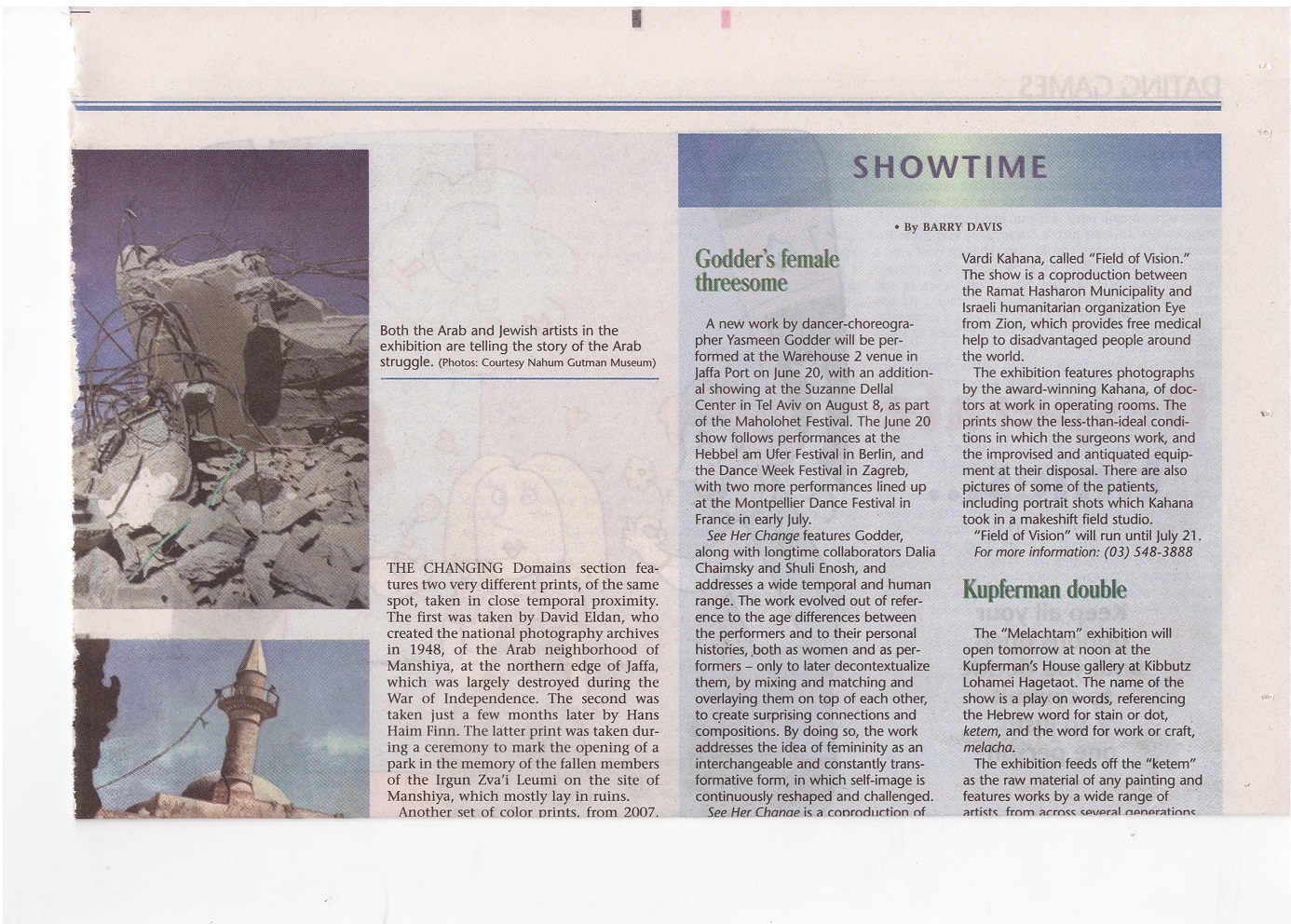 | | Jerusalem Post (3) | | | 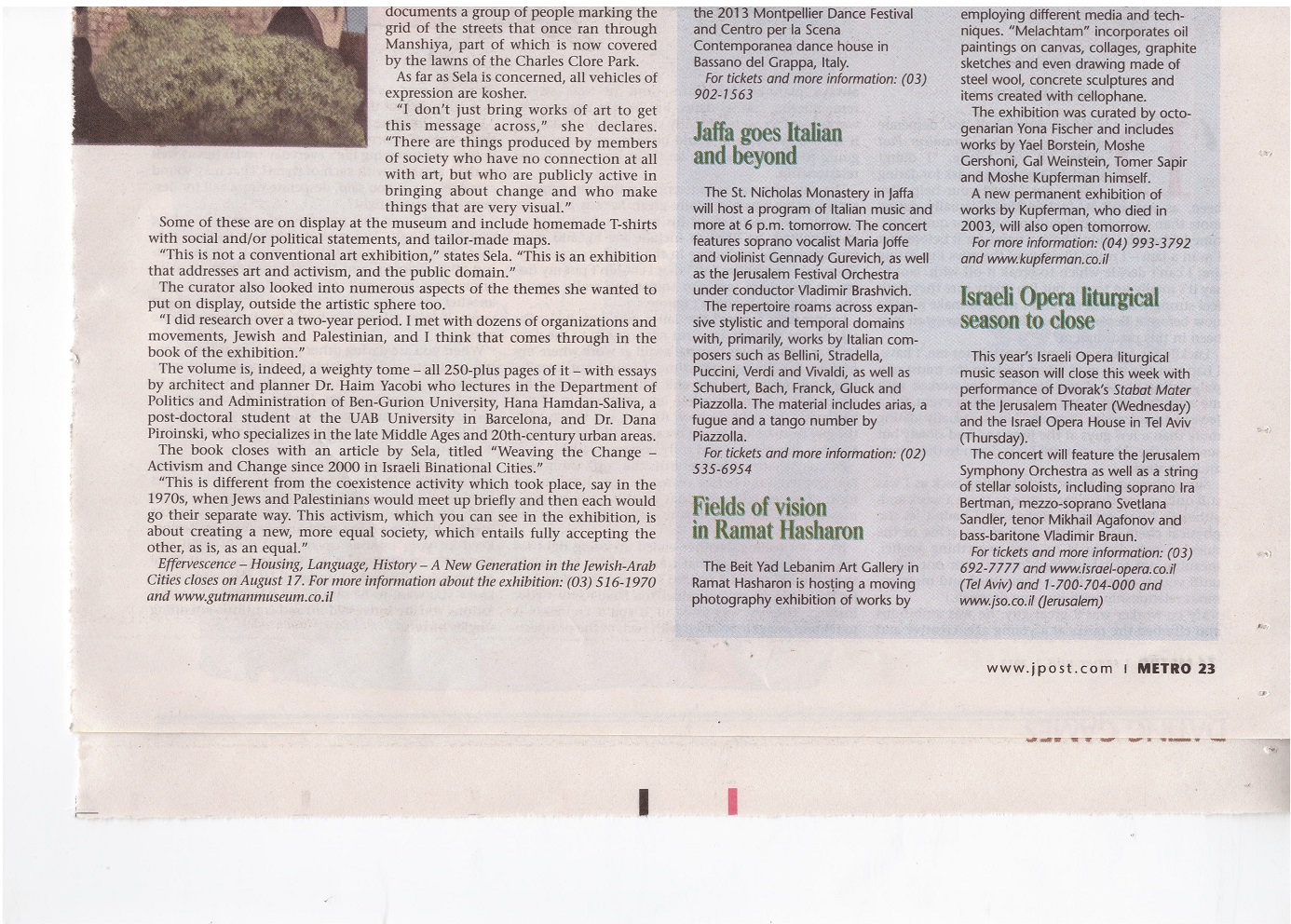 | | Jerusalem Post (4) | | |
|
|
| |
|
|
|